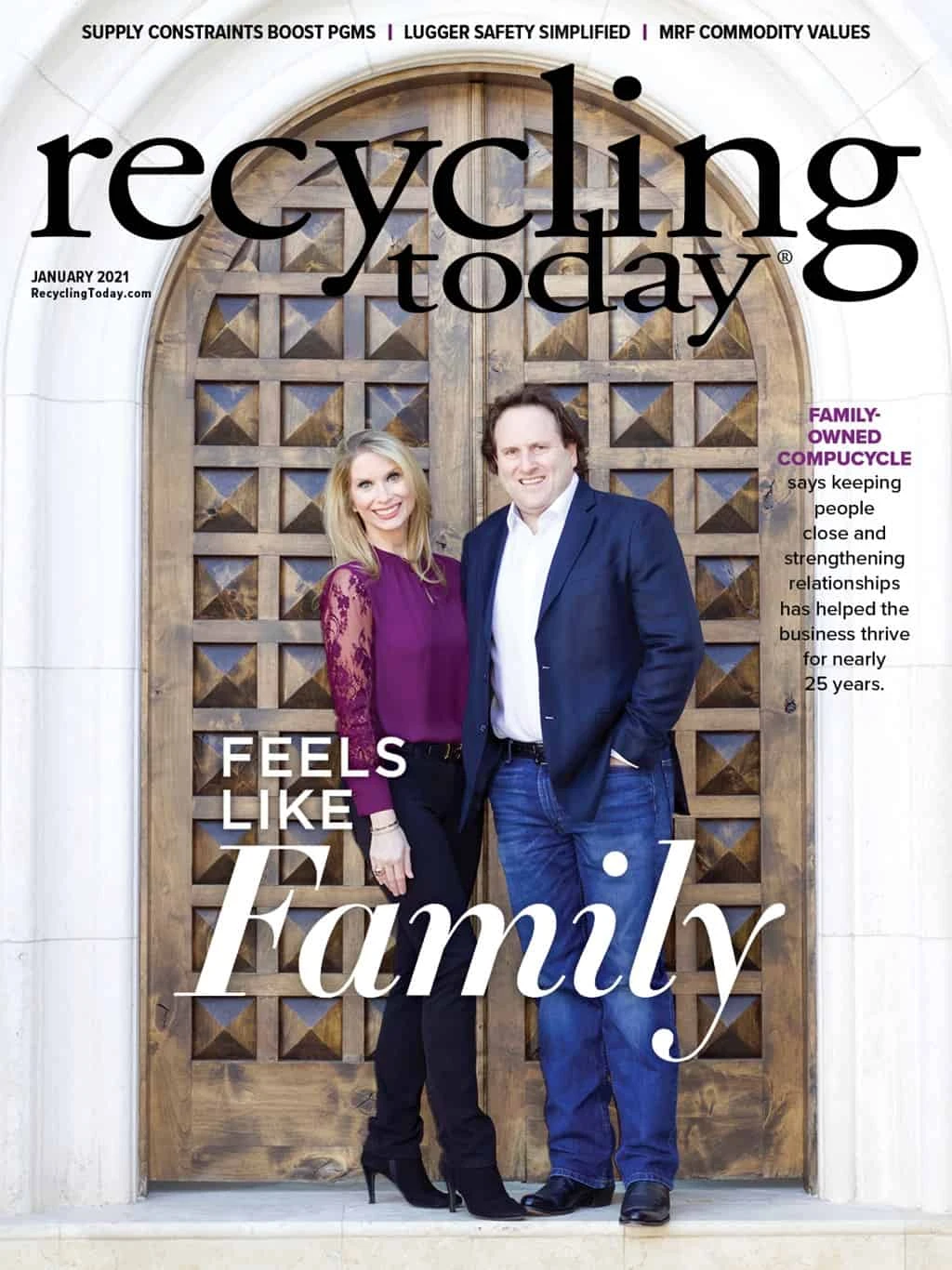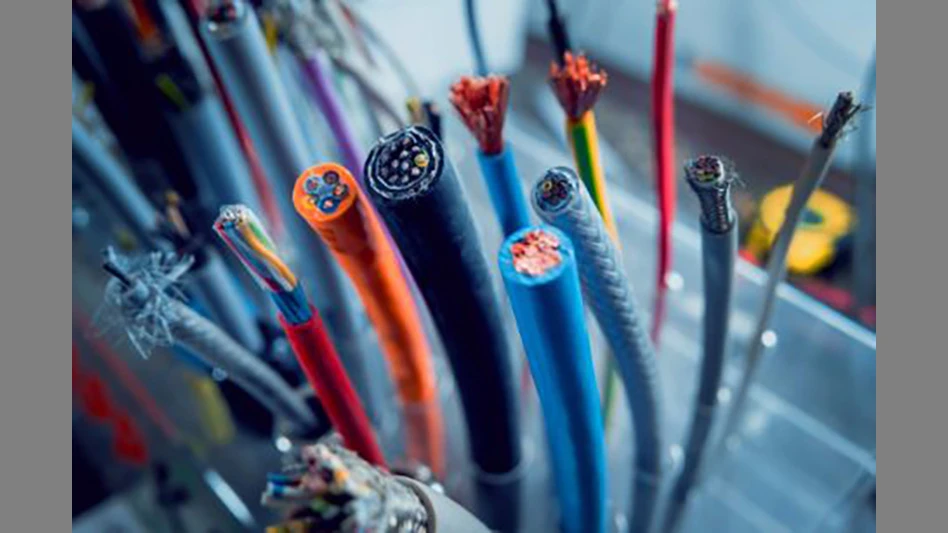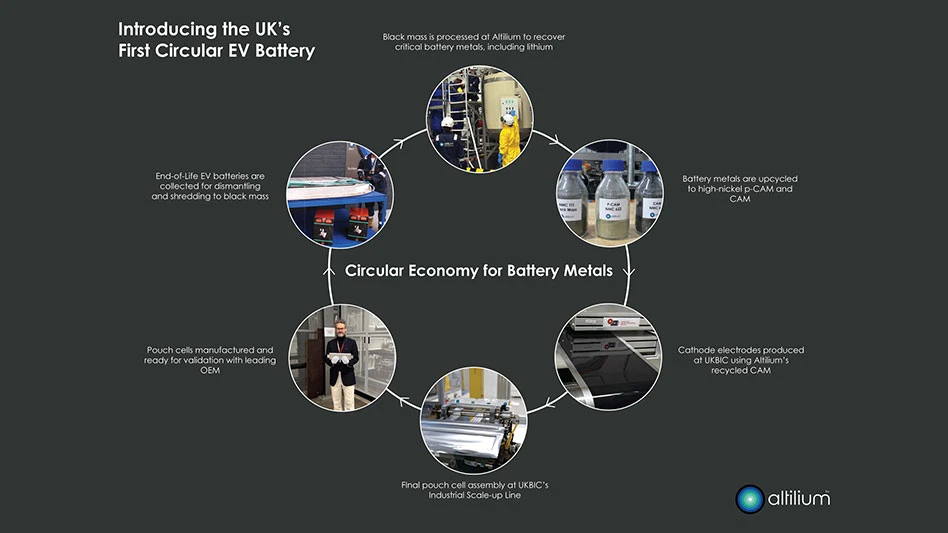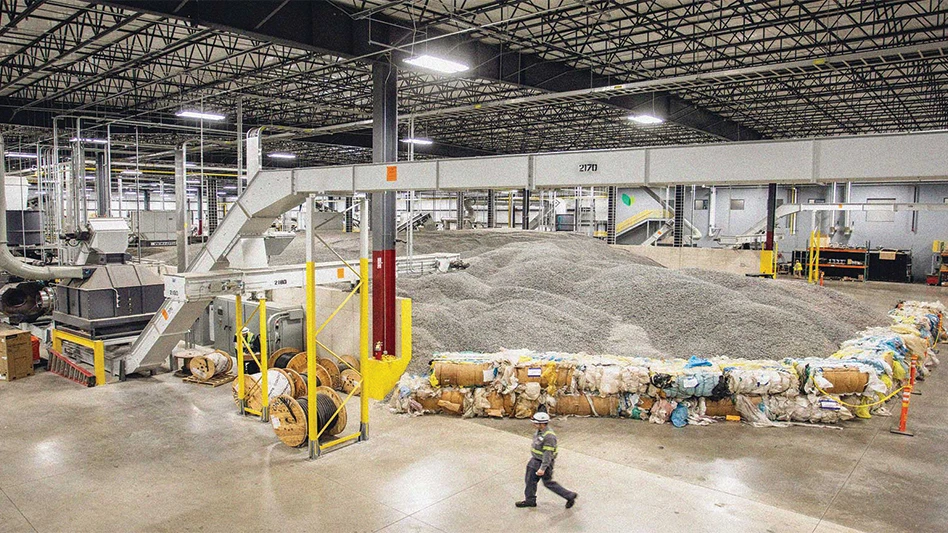
Municipal governments and the public might strongly support residential recycling, but they might not fully understand how commodity markets work in the recycling industry. They sometimes have misconceptions about the value of commodities processed by material recovery facilities (MRFs).
In February 2020, Recycling Today talked with Phoenix-based Republic Services’ Richard Coupland, vice president of municipal sales, about some of these commodity value misconceptions and trends in municipal recycling programs. Coupland said he noticed that these misconceptions became apparent after China initiated its National Sword policy in 2018.
“Kind of the root challenge that China’s decision has created is an economic one,” Coupland said. “What I mean by that is the recycling contracts and the recycling programs in America were originally based on two simple premises. One of them was that we didn’t want to charge the resident very much to begin to recycle. … So, we undercharged the resident because we were able to sell the recyclables in the market for a really good return, and a lot of people think that people in the industry were making tons of money.”
He continued, “The reality was they were making revenue, but we needed to pay back the drivers and operations. That’s kind of a myth we created for the public—that recycling was free and tons of money [could] be made doing it.”
But, Coupland said, recycling isn’t free, and commodity values for recovered paper, in particular, were at a near all-time low at the time Recycling Today talked to him in 2020.
Some groups have been working to clear up the confusion municipalities and the public have regarding commodity values. In particular, the Northeast Recycling Council (NERC), Brattleboro, Vermont, developed a quarterly “Report on Blended Commodity Values in the Northeast” in 2019 as a way to give municipalities insight into regional market trends.
“The thinking at the time was that it would be helpful to dispel some of the concerns about the value of materials and put to rest some of the distrust from municipalities working with [MRFs],” says Lynn Rubinstein, who is the executive director at NERC.
NERC surveys nearly 20 publicly owned or operated MRFs in the Northeast and mid-Atlantic region for the report. NERC says these respondents operate single-stream, dual-stream and source-separated MRFs.
Digging into data
According to NERC’s quarterly report for July 1 to Sept. 30, 2020, MRFs reported a decrease in the overall value of curbside recyclables compared with the previous quarter. In the third quarter, the average commodity value per ton with the expense of handling residuals was $40.19. Without residuals, the average commodity value per ton was $46.83. NERC reports that these values are down about 21 percent compared with the second quarter of 2020, when the average commodity value per ton with residuals was $51.23, while the price per ton without residuals was $59.58.
Rubinstein says the overall blended MRF commodity value has ebbed and flowed since NERC started surveying MRFs in 2019. She adds that it has been difficult to determine a clear pattern or trend related to these quarterly values in the region.
“The trend is that there is no trend,” she says. “Values go up, values go down.”
“The data proves to those less directly engaged in the [recycling] marketplace that these materials do have value.” – Lynn Rubinstein, executive director, Northeast Recycling Council, says of the group’s blended commodity value report
NERC’s latest report also indicates that the average processing cost for MRFs was $84 per ton, down slightly from the previous quarter but up 1 percent from when NERC’s survey began more than a year ago. The data on processing costs also seems to fluctuate with each survey, but Rubinstein says this data has been less variable than the commodity value data.
While patterns can be hard to spot in its surveys, Rubinstein says she thinks the data NERC is gathering can be interesting to share with municipalities in the Northeast, proving that recyclables do have value. She says municipalities also can pull out some more specific data to see that recovered paper prices did indeed increase in 2020 or that some plastic scrap prices have been doing well.
“It’s still interesting data—it’s a conversation starter,” Rubinstein says. “The data proves to those less directly engaged in the [recycling] marketplace that these materials do have value. On the other hand, it’s been interesting and valuable to be able to see these fluctuations and see what is happening within our region. All regions are different, but to be able to watch and see how [markets] evolve is very interesting and [is a] great value to state regulators in particular.”
Overall on the up
Looking beyond the Northeast, sources tell Recycling Today that values for most recyclables recovered at MRFs increased in 2020 compared with 2019.
“This year has actually been a much better year than the past few years for pricing,” says Anne Germain, who is the chief operating officer and senior vice president of technical and regulatory affairs at the Arlington, Virginia-based National Waste & Recycling Association.
By weight, she says, the majority of material in residential recycling carts is recovered paper, including mixed paper and old corrugated containers (OCC). “Mixed had been doing pretty poorly over the last several years in the -$2 per ton range nationwide,” she says.
But when the pandemic hit, recovered paper prices spiked in the spring of 2020. Germain says recovered paper prices have decreased from that spike, but not substantially, as of December 2020. She adds that the increase in recovered paper values has helped to somewhat prop up overall blended MRF values in the U.S. this past year compared with 2019.
“The spike in general for paper grades in the early stages of COVID, it was really a double-edged sword,” a national independent recycler who wishes to remain anonymous tells Recycling Today. “We saw [recovered paper] prices scream through the roof; but, at the same time, it’s because there was not much supply.”
Sponsored Content
Labor that Works
With 25 years of experience, Leadpoint delivers cost-effective workforce solutions tailored to your needs. We handle the recruiting, hiring, training, and onboarding to deliver stable, productive, and safety-focused teams. Our commitment to safety and quality ensures peace of mind with a reliable workforce that helps you achieve your goals.
On the container side, some prices have gone up, while others went down in 2020 compared with 2019.
“We’ve always relied on aluminum to be a kind of mainstay [at MRFs], but aluminum prices have been flat to dropping over the last year,” Germain says.
A study conducted by Gershman, Brickner & Bratton Inc., based in McLean, Virginia, for the Washington-based Can Manufacturers Institute that was released last year underlines the value that aluminum used beverage cans (UBCs) brings to MRFs. The report found that without the revenue from UBCs, most MRFs would not be able to operate without making significant changes that would ultimately affect the cost of recycling to consumers.
Germain says high-density polyethylene (HDPE) prices rose in 2020 compared with 2019. Pricing for natural HDPE and colored HDPE bottle bales has been trending upward in recent months, sources in that sector of the industry told Recycling Today in November 2020.
The national independent recycler adds that he has noticed that most commodities sold by MRFs, including plastics and metal scrap, seemed to have increased in value in 2020 relative to 2019.
“Everything generally is better than 2019,” he says. “2019 might be one of the worst years in decades for MRF materials. Even if you take out that two-month spike in OCC prices and look at the rest of 2020 in comparison with 2019, it’s still better. HDPE right now is very positive in pricing. We’re seeing a lot of the metals grades not skyrocketing, but they’re good. We’re able to move things, and pricing is generally better.”
Get curated news on YOUR industry.
Enter your email to receive our newsletters.

Explore the January 2021 Issue
Check out more from this issue and find your next story to read.
Latest from Recycling Today
- Ascend Elements appoints new president, CEO
- Culligan International to provide aluminum water bottles at Chicago running events
- Returpack reports increased DRS activity in Sweden
- Trade groups align against European export restrictions
- Construction, auto sectors show mixed signals
- Politics in Turkey threaten recycled steel outlet
- Toppoint Holdings expands chassis fleet
- Lego creates miniature tire recycling market








